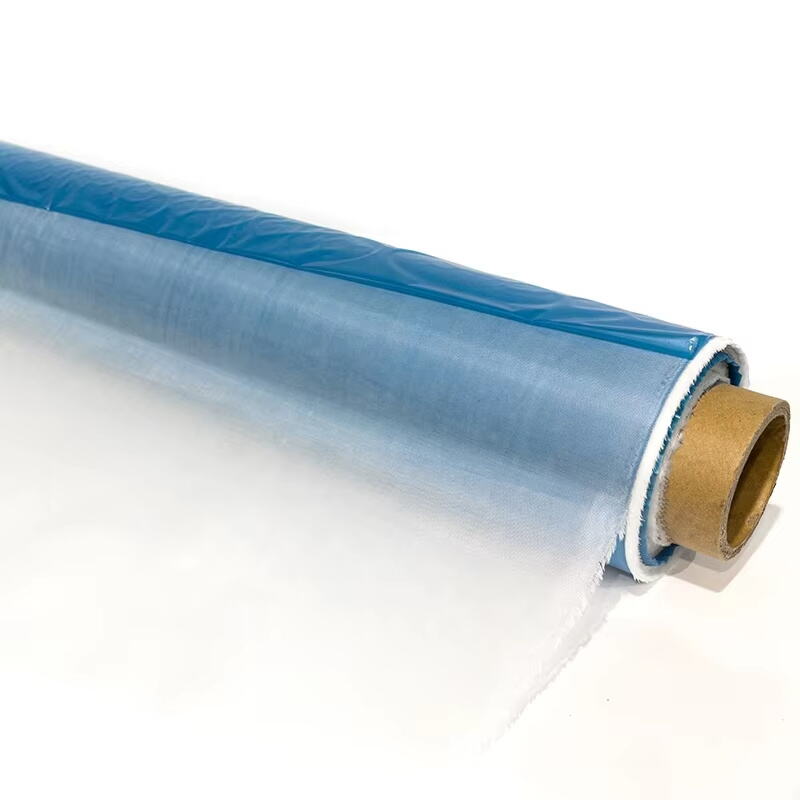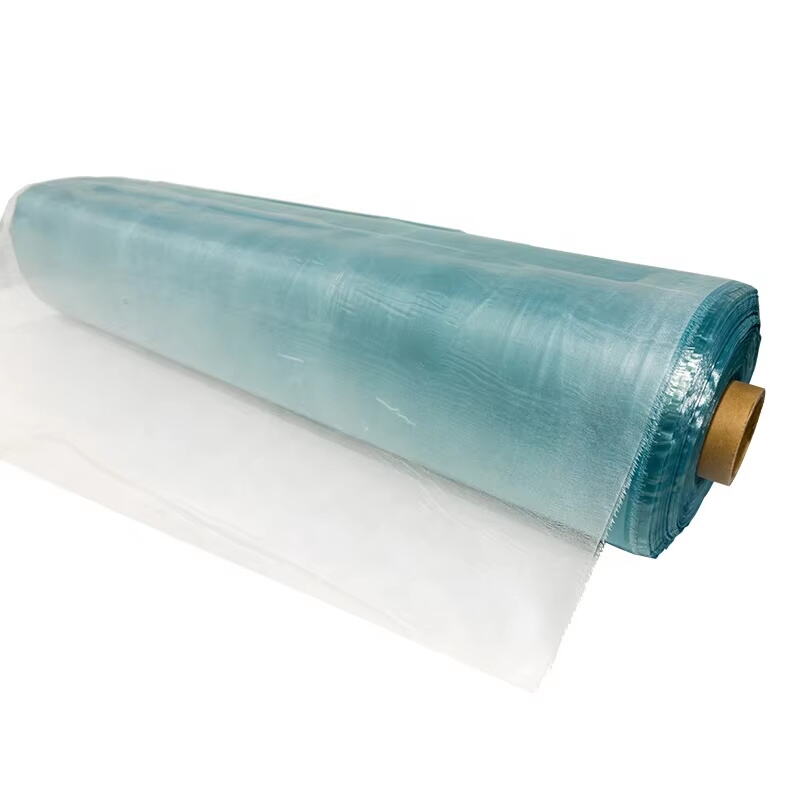การยืดอายุการใช้งานของวัสดุไฟเบอร์กลาสพรีเพร็ก
วัสดุ พรีเพ็กไฟเบอร์กลาส มีความสำคัญอย่างยิ่งต่อการรักษาคุณภาพ และเพื่อให้แน่ใจว่าวัสดุจะทำงานได้อย่างมีประสิทธิภาพสูงสุดในกระบวนการผลิตชิ้นส่วนคอมโพสิต วัสดุขั้นสูงเหล่านี้ถือเป็นการลงทุนที่สำคัญ และอายุการเก็บรักษาอาจได้รับผลกระทบอย่างมากจากสภาพแวดล้อมในการจัดเก็บ การเข้าใจข้อกำหนดพื้นฐานในการจัดเก็บและนำแนวทางปฏิบัติที่ดีที่สุดมาใช้ จะช่วยให้ผู้ผลิตสามารถรักษาวัสดุไฟเบอร์กลาสพรีเพร็กไว้ได้ และเพิ่มประสิทธิภาพการใช้งานให้สูงสุด
ข้อกำหนดพื้นฐานสำหรับสภาพแวดล้อมในการจัดเก็บ
ข้อกำหนดการควบคุมอุณหภูมิ
การรักษาระดับอุณหภูมิที่เหมาะสมเป็นสิ่งสำคัญอย่างยิ่งสำหรับการจัดเก็บไฟเบอร์กลาสพรีเพร็ก อุณหภูมิในการจัดเก็บโดยทั่วไปควรคงไว้ระหว่าง -18°C (0°F) ถึง -22°C (-8°F) ในตู้แช่แข็งเฉพาะทาง สภาพแวดล้อมที่มีอุณหภูมิต่ำนี้ช่วยชะลอกระบวนการบ่มของระบบเรซินได้อย่างมีประสิทธิภาพ ป้องกันการเสื่อมสภาพก่อนเวลา และรักษาความเหนียวและการจัดการวัสดุให้อยู่ในสภาพที่เหมาะสม
การเปลี่ยนแปลงอุณหภูมิสามารถก่อให้เกิดความเสียหายอย่างมากต่อวัสดุพรีเพร็ก การติดตั้งระบบตรวจสอบอุณหภูมิและการจัดทำบันทึกอุณหภูมิอย่างละเอียดจะช่วยให้มั่นใจได้ว่าสภาพแวดล้อมมีความสม่ำเสมอ สถานที่จัดเก็บขั้นสูงหลายแห่งใช้ระบบตรวจสอบอัตโนมัติที่มีความสามารถแจ้งเตือนเมื่อตรวจพบความผิดปกติจากระดับอุณหภูมิที่กำหนด
โซลูชันการจัดการความชื้น
การควบคุมความชื้นเป็นสิ่งสำคัญไม่แพ้กันในการจัดเก็บไฟเบอร์กลาสพรีเพริก (fiberglass prepreg) ควรมีการรักษาระดับความชื้นสัมพัทธ์ให้อยู่ต่ำกว่า 60% ความชื้นที่มากเกินไปอาจทำให้วัสดุเสื่อมสภาพก่อนกำหนด และอาจส่งผลต่อคุณภาพของผลิตภัณฑ์ขั้นสุดท้ายได้ ควรติดตั้งระบบลดความชื้นในพื้นที่จัดเก็บ และต้องมีการตรวจสอบระดับความชื้นอย่างสม่ำเสมอ
การใช้ซองดูดความชื้น (desiccant packs) ภายในภาชนะจัดเก็บจะช่วยเพิ่มชั้นป้องกันความชื้นอีกทางหนึ่ง ซองเหล่านี้ควรได้รับการตรวจสอบและเปลี่ยนอย่างสม่ำเสมอตามความจำเป็น เพื่อรักษาประสิทธิภาพในการดูดซับความชื้นไว้
ขั้นตอนการบรรจุหีบห่อและการจัดการวัสดุ
เทคนิคการห่อหุ้มอย่างเหมาะสม
ต้องเก็บไฟเบอร์กลาสพรีเพรคในบรรจุภัณฑ์ที่ปิดสนิทและกันความชื้นได้ เพื่อป้องกันการสัมผัสกับสภาพแวดล้อม ควรใช้การป้องกันหลายชั้น โดยเริ่มจากชั้นด้านในเป็นฟิล์มพอลิเอทิลีน ตามด้วยถุงกันความชื้น และต้องปิดผนึกบรรจุภัณฑ์ด้วยความร้อนเพื่อให้มั่นใจว่าได้รับการป้องกันอย่างสมบูรณ์จากความชื้นและสิ่งปนเปื้อน
เมื่อต้องเก็บม้วนที่ใช้แล้วบางส่วน จำเป็นต้องให้ความสำคัญเป็นพิเศษกับการปิดผนึกวัสดุใหม่ ปลายที่เปิดออกควรห่อหุ้มอย่างมิดชิด และต้องไล่อากาศออกทั้งหมดจากบรรจุภัณฑ์ก่อนปิดผนึก เพื่อป้องกันการเกิดออกซิเดชันและการดูดซับความชื้น
กลยุทธ์การหมุนเวียนวัสดุ
การนำระบบบริหารจัดการสินค้าคงคลังแบบเข้าก่อนออกก่อน (FIFO) มาใช้นั้นมีความสำคัญอย่างยิ่งสำหรับการจัดเก็บไฟเบอร์กลาสพรีเพรค การติดฉลากอย่างชัดเจนทั้งวันที่รับสินค้า อายุการเก็บที่เหลืออยู่ และหมายเลขล็อต จะช่วยให้มั่นใจได้ว่าวัสดุมีการหมุนเวียนอย่างถูกต้อง ระบบบริหารจัดการสินค้าคงคลังแบบดิจิทัลสามารถช่วยอำนวยความสะดวกในกระบวนการนี้ และแจ้งเตือนโดยอัตโนมัติเมื่อวัสดุใกล้ถึงวันหมดอายุ
ควรดำเนินการตรวจสอบสต็อกเป็นประจำเพื่อยืนยันสภาพของวัสดุและอัปเดตรายการจัดเก็บ ซึ่งจะช่วยป้องกันการใช้วัสดุที่หมดอายุ และช่วยให้สามารถวางแผนการจัดซื้อวัสดุได้อย่างมีประสิทธิภาพมากขึ้น

ขั้นตอนการละลายน้ำแข็งและการจัดการ
กระบวนการละลายน้ำแข็งแบบควบคุม
เมื่อนำไฟเบอร์กลาสพรีเพร็กออกจากห้องเย็น จำเป็นต้องปฏิบัติตามกระบวนการละลายน้ำแข็งอย่างเป็นระบบ โดยวัสดุควรได้รับการปล่อยให้อุณหภูมิเพิ่มขึ้นถึงอุณหภูมิห้องในขณะที่ยังคงบรรจุหีบห่อที่กันความชื้นอยู่ ซึ่งโดยทั่วไปต้องใช้เวลา 24-48 ชั่วโมง ขึ้นอยู่กับความหนาของวัสดุและขนาดม้วน
อาจมีการควบแน่นเกิดขึ้นบนวัสดุที่มีอุณหภูมิต่ำเมื่อสัมผัสกับสภาพแวดล้อมทั่วไป ซึ่งอาจส่งผลเสียต่อคุณภาพของวัสดุได้ การบรรจุหีบห่อที่ปิดสนิทจะช่วยป้องกันไม่ให้ความชื้นสัมผัสกับพรีเพร็กในระหว่างกระบวนการละลายน้ำแข็ง อุปกรณ์แสดงอุณหภูมิสามารถใช้เพื่อยืนยันว่าวัสดุได้คงอุณหภูมิสม่ำเสมอแล้ว
การจัดการอายุการใช้งานในการทำงาน
เมื่อไฟเบอร์กลาสเพรพเรกถูกทำให้ละลายแล้ว จะมีอายุการใช้งานที่จำกัดที่อุณหภูมิห้อง การติดตามระยะเวลาที่สัมผัสอุณหภูมิห้องอย่างระมัดระวังจึงเป็นสิ่งสำคัญเพื่อรักษาคุณภาพของวัสดุ ควรนำระบบการจัดเก็บเอกสารมาใช้เพื่อบันทึกเวลาที่วัสดุถูกนำออกจากที่เก็บ และระยะเวลาที่สัมผัสอุณหภูมิห้องสะสมไปแล้ว
วัสดุที่ไม่ได้ใช้ควรปิดผนึกใหม่และนำไปเก็บในที่เย็นทันที ควรระบุระยะเวลาการสัมผัสสะสมไว้บนบรรจุภัณฑ์ เพื่อให้มั่นใจในการติดตามอายุการใช้งานที่เหลืออยู่ของวัสดุ
ระบบควบคุมและตรวจสอบคุณภาพ
ระเบียบวิธีการทดสอบเป็นประจำ
การจัดตั้งโปรแกรมการทดสอบอย่างครอบคลุมจะช่วยยืนยันความเหมาะสมในการใช้งานของไฟเบอร์กลาสเพรพเรกที่เก็บไว้ การทดสอบคุณสมบัติของวัสดุอย่างสม่ำเสมอ รวมถึงระดับการเหนียว (tack level) ลักษณะการไหล และเวลาเจล (gel time) สามารถช่วยระบุการเสื่อมสภาพได้ก่อนที่จะส่งผลกระทบต่อการผลิต ควรจัดทำตารางการสุ่มตัวอย่างเพื่อทดสอบโดยพิจารณาจากช่วงเวลาและเงื่อนไขการจัดเก็บ
การจัดทำบันทึกรายละเอียดผลการทดสอบอย่างต่อเนื่องจะช่วยให้สามารถวิเคราะห์แนวโน้มและตรวจพบปัญหาเกี่ยวกับการจัดเก็บที่อาจเกิดขึ้นได้แต่เนิ่นๆ บันทึกเหล่านี้ยังเป็นเอกสารอ้างอิงที่มีค่าสำหรับการประกันคุณภาพและความต้องการของลูกค้า
การบำรุงรักษาสถานที่จัดเก็บ
การบำรุงรักษาสถานที่จัดเก็บและอุปกรณ์อย่างสม่ำเสมอมีความสำคัญอย่างยิ่งต่อการรักษาระดับสภาพแวดล้อมที่เหมาะสม โดยรวมถึงการปรับเทียบระบบตรวจสอบอุณหภูมิและความชื้น การตรวจสอบซีลและฉนวนกันความร้อน รวมถึงการตรวจสอบระบบไฟฟ้าสำรอง ควรมีการจัดทำตารางการบำรุงรักษาเชิงป้องกันและปฏิบัติตามอย่างเคร่งครัดเพื่อให้มั่นใจว่าสภาพการจัดเก็บคงที่อยู่เสมอ
ควรจัดทำขั้นตอนการตอบสนองต่อเหตุฉุกเฉินเพื่อรับมือกับความล้มเหลวของอุปกรณ์หรือไฟฟ้าดับ ควรมีการระบุระบบสำรองและทางเลือกในการจัดเก็บอื่น ๆ เพื่อปกป้องวัสดุในช่วงระหว่างการบำรุงรักษาหรือสถานการณ์ฉุกเฉิน
คำถามที่พบบ่อย
สัญญาณของการจัดเก็บไฟเบอร์กลาสพรีเพริก (fiberglass prepreg) ที่ไม่ถูกต้องมีอะไรบ้าง
ตัวบ่งชี้ทั่วไป ได้แก่ การเปลี่ยนแปลงของความเหนียว การเห็นการไหลของเรซินอย่างชัดเจน ความยากลำบากในการจัดการ และการไหลที่ไม่สม่ำเสมอระหว่างกระบวนการผลิต วัสดุใดก็ตามที่แสดงอาการเหล่านี้ควรได้รับการประเมินอย่างละเอียดก่อนใช้งาน และอาจจำเป็นต้องแยกเก็บไว้ก่อน
ไฟเบอร์กลาสเพรพเรกสามารถเก็บรักษาได้นานเท่าใดภายใต้สภาวะที่เหมาะสมโดยทั่วไป
เมื่อเก็บรักษาอย่างถูกต้องที่อุณหภูมิและความชื้นตามที่แนะนำ ไฟเบอร์กลาสเพรพเรกวัสดุส่วนใหญ่สามารถคงคุณสมบัติไว้ได้นาน 6-12 เดือน อย่างไรก็ตาม อายุการเก็บรักษาระยะเวลาเฉพาะขึ้นอยู่กับระบบเรซินและข้อกำหนดของผู้ผลิต
สามารถนำม้วนไฟเบอร์กลาสเพรพเรกที่ใช้เพียงบางส่วนกลับไปเก็บในที่จัดเก็บได้หรือไม่
ได้ ม้วนที่ใช้เพียงบางส่วนสามารถนำกลับไปเก็บได้ หากปิดผนึกใหม่อย่างถูกต้องโดยใช้วัสดุหีบห่อที่กันความชื้นและป้องกันการปนเปื้อน ควรบันทึกเวลาที่เคยนำมาใช้งานสะสมไว้อย่างระมัดระวัง และพิจารณาเมื่อคำนวณอายุการเก็บรักษาที่เหลืออยู่


